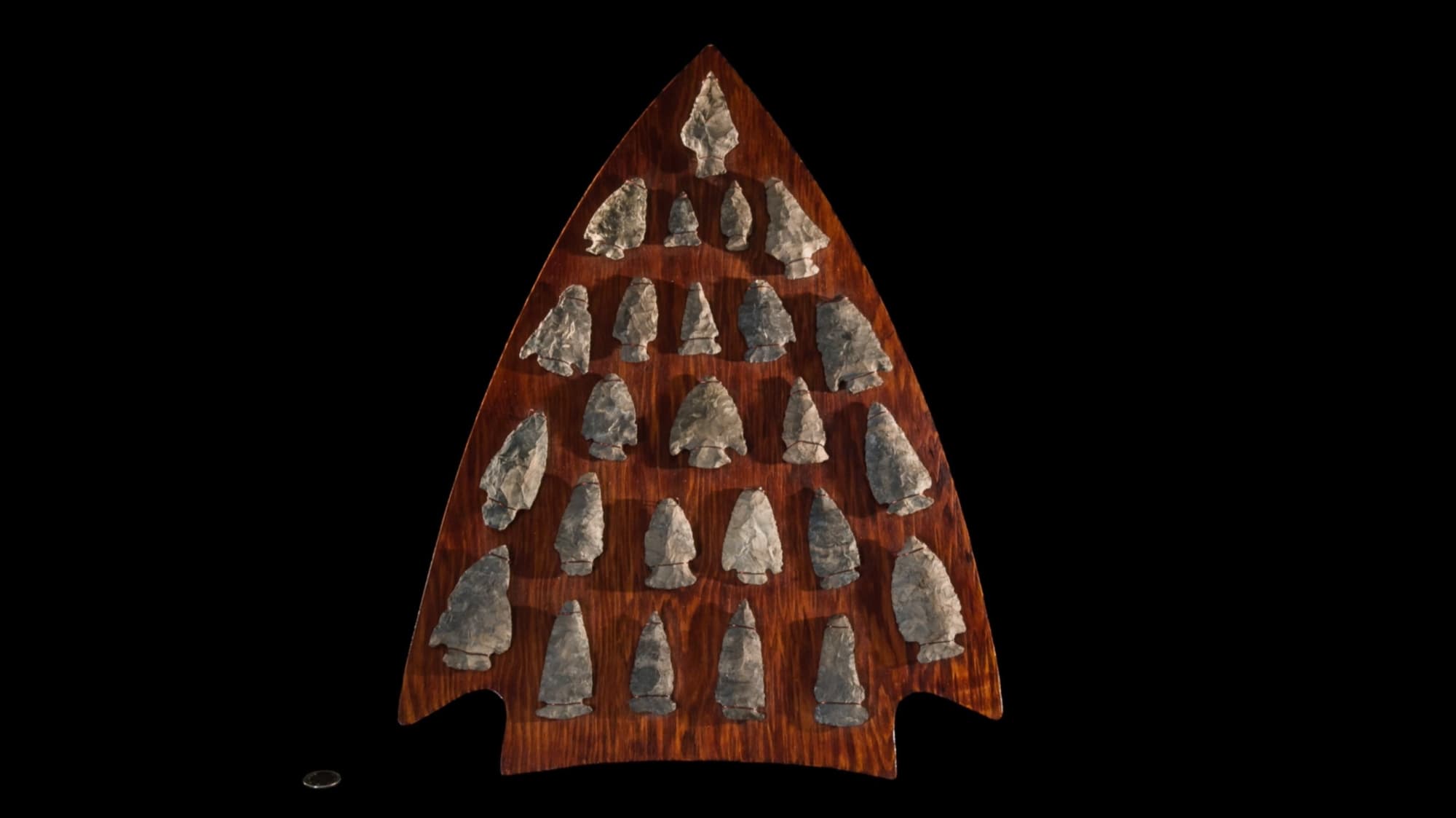
Videos
By watching these videos join exhibition curators Rob MacDonald, Rick Hill, and Dave Labbe as they explain the source materials, uses, and beauty of the Indigenous artifacts in the collections of the Niagara Falls History Museum. And see if you can help solve the mystery of the bannerstones! What are they and why were they made? The collections hold many fascinating objects designed to fascinate, excite, and inspire.

13,000 Years
Within the Indigenous collections of the Niagara Falls History Museum is found archaeological evidence of Indigenous occupation dating back some 13,000 years, from Ontario's Early Archaic Period through the Late Woodland Period right up to the present day. The collections offer insight into the first Indigenous footprints made upon the land to encounters with Europeans through development of the tourism trade that currently drives the region's modern economy.
Watch Video
Mystery of the Bannerstones
Bannerstones are one of the most mysterious Indigenous ground-stone artifact categories because they fell out of use thousands of years ago and have no apparent modern analogue. They are also one of the most aesthetically beautiful artifact classes, having been fabricated from a variety of exquisitely coloured and patterned stone materials. The examples shown in this video are made of beautifully banded slate.
Watch Video
Indigenous Aesthetics
Across a range of object types, examples abound of the beautiful aesthetics Indigenous peoples fashioned into their creations. Captured by expertly lit and photographed images even small objects like projectile points, shell beads, and bone tools come to life in this exhibit, revealing skillfully crafted items used for function or as fashion.
Watch Video
Onondaga Chert Formation
Access to geographically discrete resources such as toolstone outcrops of chert (a flint stone), created an opportunity to develop weapons, tools, and trade commodities. Along the northern coast of Lake Erie is located a significant chert outcrop called the Onondaga Formation. Archaeological evidence at the Peace Bridge site in Fort Erie shows that this chert was being quarried and manufactured into tools such as projectile points (both spearheads and arrowheads), scrapers, and drills dating back thousands of years.
Watch Video
Projectile Points
The Niagara Falls History Museum has an outstanding collection of projectile points. The quality and consistency of projectile point manufacture that had developed in the Niagara Region by around 3,000 years ago is illustrated by well-made and extremely thin Meadowood type points revealed in the exhibition. The Peace Bridge site in Fort Erie was also a major manufacturing centre for these points and caches of nearly identical points has led researchers to suggest that individual skilled knappers may be identifiable.
Watch Video